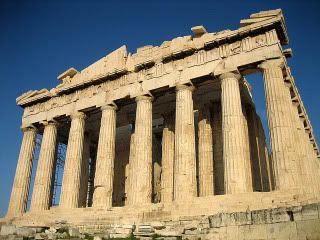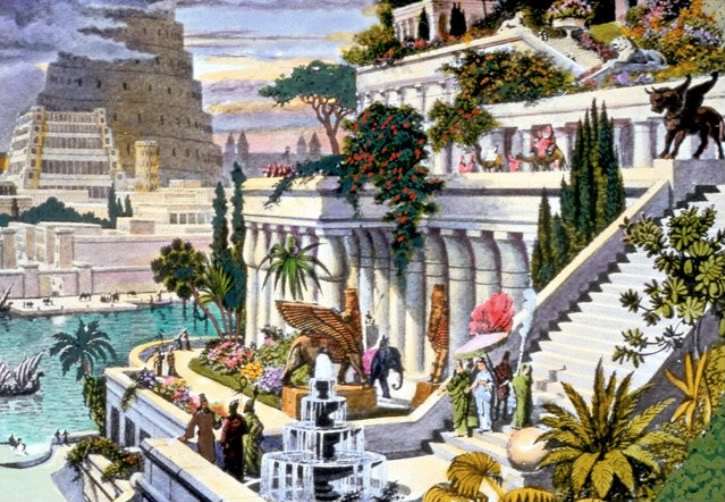
From Plutarch's Life of Pericles:
For this reason are the works of Pericles all the more to be wondered at; they were created in a short time for all time. Each one of them, in its beauty, was even then and at once antique; but in the freshness of its vigor it is, even to the present day, recent and newly wrought. Such is the bloom of perpetual newness, as it were, upon these works of his, which makes them ever to look untouched by time, as though the unfaltering breath of an ageless spirit had been infused into them.
Originally built as a temple to their patron Goddess and a monument to Pericles' great power, the Parthenon stands out as signature Greek Architecture and a symbol of Athens’ significance in history. Though in a state of disrepair, it remains a strong presence on the Athenian Acropolis. It housed Athena’s treasury and was the central point of worship to her, reflecting Athens’ military supremacy.

When we look at such grand achievements as the Parthenon, the hanging gardens of Babylon, the great Pyramids of Egypt and South America, we are witness of the awe inspiring greatness man can achieve. Sometimes, thousands of years later we know the names of those involved in the creation of these monuments - Pericles hired the great Architects Iktinos and Kallicrates, and sculptor Pheidias. Most of the time, we are left to speculate about the purpose of the memorial, conjecture and guesswork pave the way to understanding.
Thousands of years and mankind is still on this blue marble trying to leave its mark. The greatness of yesteryear crumbles as time steadily marches forward. What are we leaving in our wake? Will we leave monuments of our greatness or an endless sprawl of pavement? Will our children's children look at our great works as wonderful expressions or destroy them to make way for progress?











No comments:
Post a Comment